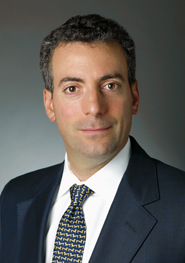Four years ago, J.P. Morgan found itself behind in the electronic trading game. Its offerings were outdated and its trading desk behind the times.
In 2010, the firm brought on Frank Troise, a Barclays Capital alum and trading veteran, as its new global head of electronic trading, to spearhead a complete build-out of the desk-from soup to nuts. Troise told Traders Magazine in an interview at the time that his mandate was to establish a world-class electronic trading desk with a full palette of algorithms, smart order-router technology and post-trade analytics. Then, once the task was complete, get the word out that the bank was ready to compete.
That was then, this is now.
Click Here toSee the original story
Now, four years later, Troise, global head, electronic client solutions, and Daniel Ciment, Americas head, electronic trading solutions, sat down again with Traders Magazine and talked about how the build-out unfolded, its success and how the bulge firm will stay relevant in the current market structure.
Traders Magazine: With the execution side of the business all complete now, how does your research platform factor into your business model? How do you see that factoring into how the firm performs in the broker vote?
Troise: We have a highly ranked research house. If we are investing to have high-execution capability and high-quality research, we want that to come through on a broker vote on research. Of course, we look at building out best-in-class research and execution to provide the best service to clients.

Traders: Whats going on in the electronic desk? It has been four years – how is J.P. Morgan doing?
Troise: We are in full gear. We are in production mode, constantly working with clients to fine-tune products. We are still investing heavily so that we do not pare back the offering.
Traders: How many algos are in the algos suite?
Troise: Well, we have all of our baseline benchmark algos: VWAP/TWAP with volume, and the implementation shortfall, IS. And then we have an algo called Aqua, which is our liquidity-seeking algo that has a number of degrees of urgency.
Traders: All that customization is done in-house?
Troise: It is done in-house. Looking at 2010, it was a platform-build year with a technology infrastructure team. In 2011, there was a product rollout on top of that platform. The past two years have been full-bore allowing us to gain credibility with the client base. We did that in spades in 2013 by delivering quantitative expertise around the execution process. We have not stepped back; we have just continued to invest in the outcome.
Traders: When it comes to the smart order-router logic, did you have to start from the ground up, or did you have something to work with already?
Daniel Ciment: The logic we have built is based on years of experience in the industry from my team. We rebuilt our algo and routing platforms from the bottom up, using the best-in-class technology. We also have built highly sophisticated models to drive the order placement process.
Traders: Are you transparent with the buyside about your order-routing logic and methodology?
Ciment: Absolutely. We explain to our clients exactly how our products work, what they do, where they post, where they sweep and where they are getting executed-full transparency.

Traders: Recently, it was reported that FINRA will be asking brokers questions about their order-routing logic, how an order gets routed. Are you ready to respond?
Ciment: We offer up this type of analysis to our clients already-whether it is on the very high-level algo performance or it is detailed routing performance, where their orders are getting executed, where they are getting routed or how the performance is at various venues. We offer all of that. Many of our clients want to even dig deeper, which is great, because we have that capability and interest.
Traders: During the rebuild, you created a dark pool, JPM-X. How is it performing?
Ciment: It is performing really well. While we dont report volumes publicly, the volume is significant. Moreover, it is high-quality volume. When we look at the quality of the volume in our pool, we do not just look at fill rates and volume. We perform a variety of proprietary analysis to make sure the volume is helping our overall trading performance.
Troise: While we do not report volumes now, we would happily report if there was a consistent and clearly defined standard.
Traders: Do you have a way of watching the participants within the pool and for those that are exhibiting adverse behavior?
Ciment: First of all, when we built the product, it was built on the best technology available, including direct data feeds from the exchanges. By using direct feeds, and we think we are somewhat unique in that, it helps our client execution quality within the pool because it is looking at the fastest market data possible using leading technology.
JPM-X is also a price-tier-time priority ATS. These tiers allow our institutional clients to get better executions in JPM-X. So if the price is the same, an institutional client will trade before a principal order or a market maker that might be in the pool. Clients can also choose to not trade against certain types of flow in our book.
Traders: So, what is next for the desk? Are there any specific targets or goals you want to achieve?
Troise: We have a lot of targets that we use to measure the business. For example: execution performance, client usage, volume traded, market share, revenues. We are very focused on delivering our products to clients and tuning performance to achieve best execution for their order flow characteristics.
Traders: Is there a sector of the market you are looking to tap that might be underserved?
Troise: We are focused on delivering electronic execution products to several client segments: institutions, hedge funds and third-party broker-dealers.
Traders: Has J.P. Morgans electronic trading group increased, decreased or remained static since the build-out?
Troise: Since 2010, the electronic sales and electronic trading teams have grown and the desk has approximately doubled in size globally. We now have personnel in New York, London, Hong Kong, Tokyo, Sydney, India and Singapore.
Traders: Do you find you are spending more time now than four years ago educating the buyside? What are your conversations with them like now?
Troise: They are a very sophisticated group of users. The conversation now is far more about transparency, performance, and custom analytics and execution strategies. The business has evolved beyond periodic canned TCA reports with slippage against standard benchmarks.
Ciment: We have always worked very closely with the buyside. Clients are willing to work with us to help improve their trading process. Sometimes they take it, sometimes they may not, but we are building trusted partnerships with our clients.
Troise: It is like taking an exam in school, except that the pencils are never down in this exam. The buyside is constantly giving you an exam. You can never put the pencil down and say, Done, lets pack away, that the course is over.




